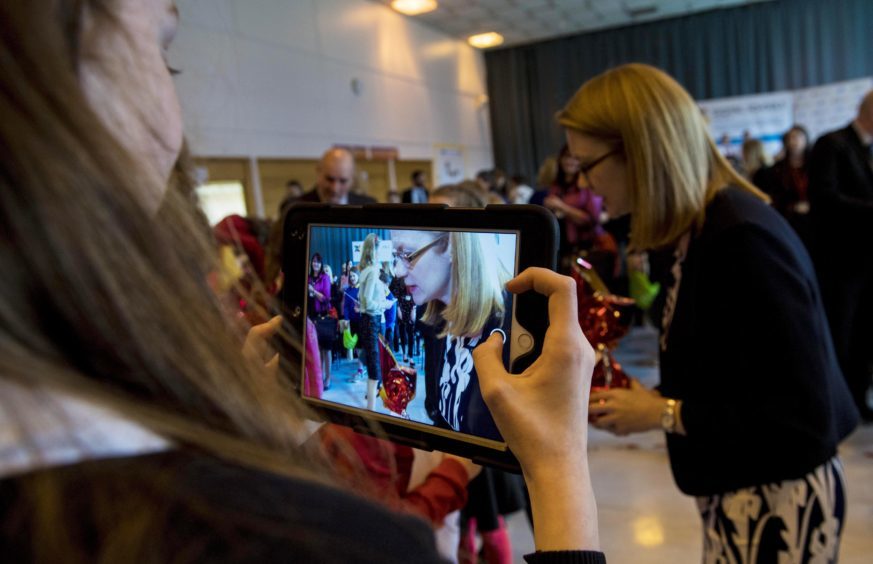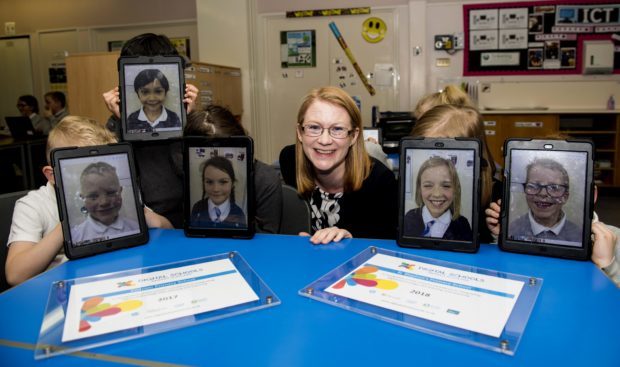Ten primaries in Tayside and Fife have become Digital Schools.
They are among 35 primaries and three high schools which have been officially recognised for their excellence in digital teaching and learning.
Inverbrothock (Arbroath), Seaview (Monifieth), Craigiebarns, Fintry (both Dundee), Blairhall (west Fife), St Marie’s , Torbain (both Kirkcaldy), Tulliallan (Kincardine), Milnathort and Portmoak (both Kinross-shire) join 43 primary schools awarded Digital School accreditation last year.

Launched in 2016, the programme was developed to support and recognise schools in their efforts to integrate digital technology across the curriculum.
Free to all schools, it offers resources to school which aim to do more with technology in their classrooms.
Industry partners HP, Microsoft and Intel operate the programme and are providing £600,000 over five years.
It is run in partnership with Education Scotland and Skills Development Scotland and is supported by the Department of Education and Lifelong Learning.
List of new Digital Schools in Scotland. Well done to all the pupils and teachers! pic.twitter.com/j2YY7lZSUO
— Digital Schools (@Schools_Digital) May 1, 2018
A quarter of Scottish schools have already registered to take part.
Science Minister Shirley-Anne Somerville said: “It is encouraging to see so many schools embracing digital and supporting teacher professional learning to enrich their pupils’ education.”
A HUGE well done to the staff and pupils of @DundeeCouncil ‘s @CraigiebarnsPS and @FintryPrimary on receiving their @Schools_Digital Awards today at the official ceremony! Very well deserved! ???? #wearedigitaldundee pic.twitter.com/lOzA1zVOG5
— Jen Mackay ??? ? (@lookwhatjendid) May 1, 2018
With digital technology making a significant contribution to jobs and economic growth, Scotland must ensure young people were prepared with the skills needed.
That was why the STEM – science, technology, engineering and maths – strategy included a commitment to support digital skills development in early learning settings and primary schools, she said.
Brilliant photos, thanks so much for coming along to share in the celebration today @BlairhallPS and well done again on all your hard work ??? https://t.co/BU5cReb1Lx
— Digital Schools (@Schools_Digital) May 1, 2018
That was vital, according to George Brasher, the UK managing director of HP.
Careers are increasingly lying in sectors like robotics, programming and engineering.
But with recent reports showing employers were struggling to fill 43% of STEM-related jobs, he said that showed the UK was “clearly unprepared”.
“HP believes it has a responsibility to partner with industry leaders and help close this skills gap.
“Programmes such as the Digital Schools Award do just this – reinventing how schools teach STEM skills, better equipping the next generation for the digital economy,” he added.
Huge congrats @seaview_ps! Well done on your incredible achievement! ??? https://t.co/0Cbu7YgUkJ
— Digital Schools (@Schools_Digital) May 1, 2018
Steven Grier, country manager for Microsoft Scotland, said the initiative was a fantastic example of how the industry was committed to supporting the next generation so they could acquire the skills needed to thrive in the modern digital workplace.
Claire Gillespie from Skills Development Scotland said: “With Scotland’s digital technologies sector offering a huge array of opportunities for new entrants, it’s vital that we help our young people develop their interest and enthusiasm in the digital world.
Alan Armstrong, Strategic Director, Education Scotland said: “We know that making effective use of digital technology helps to raise learners’ attainment, ambition and future careers opportunities.”










